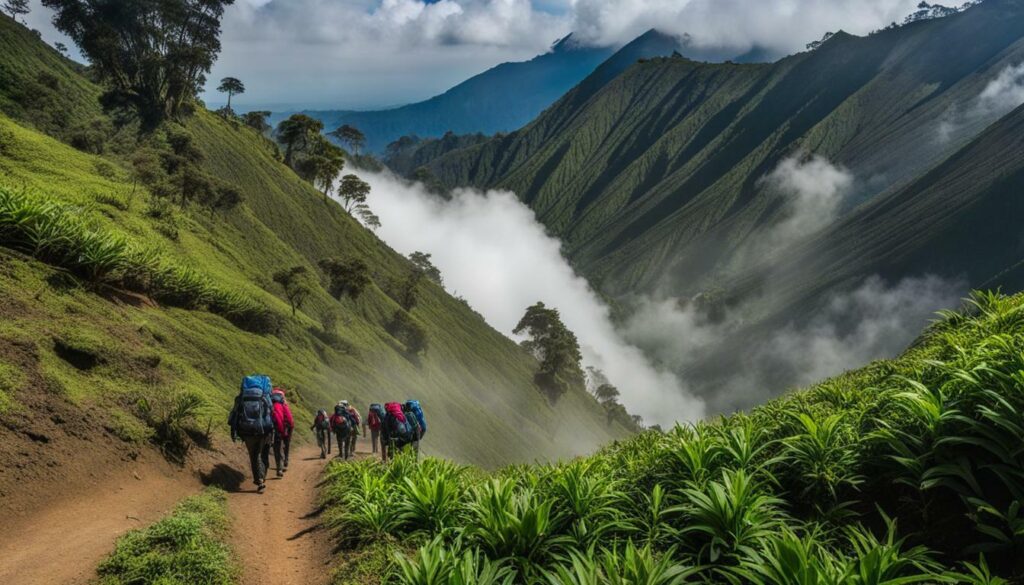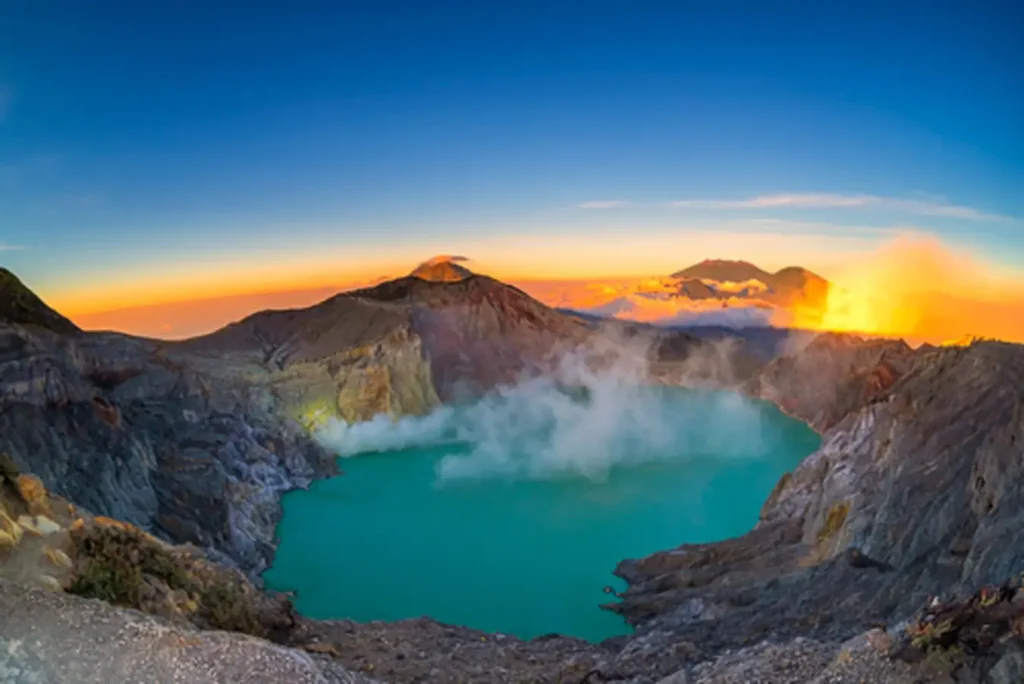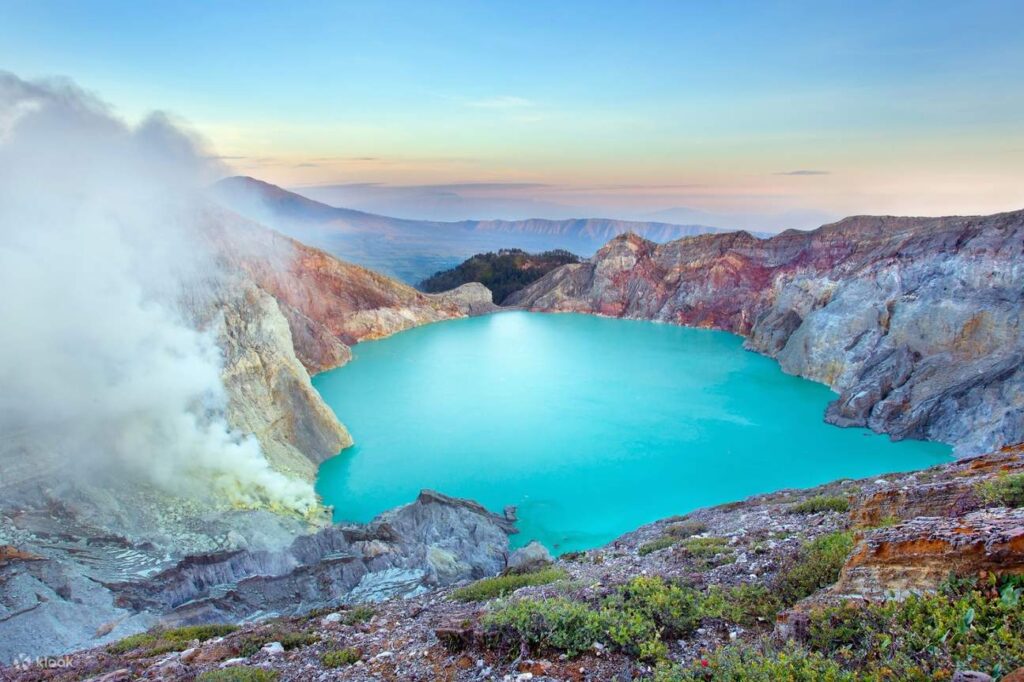Are you planning on hiking Mount Ijen? The awe-inspiring volcano in Indonesia offers a unique adventure, but it’s important to understand and prepare for the difficulties you may encounter. Assessing the mount ijen hike difficulty is crucial for planning your itinerary and managing your time effectively. In this guide, we will provide a comprehensive overview of the Mount Ijen hiking trail and explore the various factors that contribute to the hike’s difficulty.
Key Takeaways
- Understanding the mount ijen hike difficulty is crucial for planning your itinerary and managing your time effectively
- Assessing the volcanic terrain of Mount Ijen is important for understanding the challenges the hike may throw your way.
- Choosing the right time to hike Mount Ijen can significantly impact the overall difficulty of your journey.
- Proper preparation can help you minimize difficulties you may face on the trail and enhance your overall experience.
- Despite the challenges, hiking Mount Ijen can be a rewarding experience if you are prepared to overcome the difficulties.
Understanding the Mount Ijen Terrain
One of the most crucial factors contributing to the Mount Ijen hike difficulty is the unique terrain of the Ijen volcano. The climb can be challenging due to the steep inclines and rugged landscape that hikers must navigate. Hiking Mount Ijen requires a reasonable level of fitness and a solid understanding of the terrain.
One of the highlights of the Mount Ijen hike is the breathtaking and awe-inspiring volcanic landscape. The terrain comprises of rocky paths, jagged cliffs, and steep inclines. Hikers must be prepared to face these challenging conditions while climbing Mount Ijen. The trek can be especially challenging for those who are not accustomed to hiking on rough terrain or steep inclines, and it is recommended to have prior hiking experience and training.
The Ijen volcano trekking path can be slippery at times, so it’s advisable to wear sturdy hiking boots with proper traction. The climb up to the summit is steep, and the descent can also be tricky. Hikers must maintain their balance and be cautious while descending, especially if the path is wet or muddy.
In some parts of the climb, hikers must navigate sharp and narrow paths surrounded by steep drop-offs that require steady footing and concentration. It’s essential to take breaks if necessary, especially if you feel exhausted or overwhelmed. Hikers are advised to take their time, pace themselves, and enjoy the beautiful scenery.
Overall, climbing Mount Ijen can be challenging, but it is a rewarding and unforgettable experience. The unique terrain, stunning views, and volcanic landscapes make the Ijen volcano trekking an adventure of a lifetime.
Best Time to Hike Mount Ijen
Choosing the best time to hike Mount Ijen is an essential factor to consider when planning your trip. To have the best experience, it is important to choose a time when the weather is most favorable and the terrain is less challenging.
The best time to hike Mount Ijen is during the dry season, between May and September. During this period, the weather is relatively dry, and the skies are clear with little chance of rainfall. This makes it possible to have a clear view of the crater lake and avoid the muddy and slippery trails, which can be a safety hazard for hikers.
It is important to note that Mount Ijen can be very crowded during the peak summer months of June to August. If you prefer a quieter experience, it is advisable to plan your hike during the shoulder months of May and September.
If you want to experience the beauty of Mount Ijen without the crowds and have a chance to witness the blue flames, you may want to consider hiking during the offseason from October to April. However, this period is the wet season, and the trails are slippery and muddy, making the hike more challenging.
Finally, keep in mind that weather patterns can be unpredictable, and it is always a good idea to check the weather forecast before setting out on your hike. By planning your hike during the best time, you can enhance your overall experience and minimize the challenges that come with hiking Mount Ijen.
Preparing for Mount Ijen Hike
Preparation is key to successfully tackling the Mount Ijen hike. Here are some essential tips and tricks to help you prepare for the hike:
- Physical fitness: It’s important to be in good physical shape to hike Mount Ijen. You should start training at least a month in advance and include cardio, strength, and endurance exercises in your routine.
- Required equipment: Make sure you have the necessary equipment for the hike, such as sturdy hiking shoes, warm clothing, a headlamp, and a gas mask for the sulfuric fumes. You can rent a gas mask at the base of the mountain if you don’t have one.
- Packing essentials: Pack light, but make sure to bring enough water, snacks, and sunscreen. It’s also a good idea to bring a medical kit and a fully charged phone in case of emergencies.
- Safety precautions: Always hike with a guide or a group, and follow their instructions. Stay on the marked trails and avoid taking shortcuts. It’s also crucial to respect the environment and avoid leaving any litter behind.
By following these tips, you can ensure that you are adequately prepared for the Mount Ijen hike. Good luck and have a safe journey!
Mount Ijen Hike Duration
The duration of the Mount Ijen hike can vary depending on various factors such as your starting point, hiking speed, and overall fitness level. The most common starting point is the Paltuding entrance, which takes approximately 1.5 to 2 hours to reach the summit. However, some hikers choose to start from the nearby town of Sempol, which can add an additional 3-4 hours to the duration of the hike.
In terms of hiking speed, the average time to reach the summit is around 2 hours, while the descent takes approximately 1 hour. However, this can vary depending on your personal fitness level, the number of breaks you take, and the overall difficulty of the trail.
It’s important to note that the Mount Ijen hike can be physically challenging, especially if you’re not used to hiking at high altitudes. It’s recommended that hikers take their time and pace themselves throughout the hike to avoid exhaustion and altitude sickness.
Overall, the Mount Ijen hike can take between 3-5 hours to complete depending on various factors. It’s advisable to plan your itinerary accordingly and allocate ample time for rest and exploration.
Overcoming Challenges on the Mount Ijen Hike
Hiking Mount Ijen is a challenging endeavor that requires physical fitness and mental resilience. However, with the right strategies and mindset, you can overcome the difficulties and make it an unforgettable experience. Here are some potential challenges you may encounter while on the mount ijen hiking trail and how to overcome them:
Dealing with Fatigue
Climbing Mount Ijen involves ascending steep slopes and hiking for several hours, which can be physically exhausting. To overcome this, it’s important to pace yourself and take breaks when necessary. Don’t try to rush or push yourself too hard, as this can lead to burnout. Instead, take short breaks every hour or so to rest your legs and hydrate. Snacks like granola bars or energy gels can also provide a quick burst of energy when needed.
Navigating Tricky Sections of the Trail
The Mount Ijen hiking trail is not always straightforward, and there may be sections that are narrow, slippery, or rocky. It’s essential to pay close attention to the trail and your footing to avoid accidents. Wear appropriate hiking shoes with good grip and ankle support, and use hiking poles for added stability. If you’re unsure about a particular section of the trail, take your time and assess the situation carefully before proceeding.
Staying Motivated
During the Mount Ijen hike, it’s easy to feel overwhelmed or discouraged, especially if you’re not used to hiking or climbing long distances. To stay motivated, set achievable goals for yourself and break up the hike into smaller segments. Celebrate your progress along the way, and take time to appreciate the stunning views of the volcanic landscape. Listening to music or carrying a small snack as a reward can also boost your morale and motivation.
By understanding the potential challenges and using these strategies to overcome them, you can successfully complete the Mount Ijen hike and have an unforgettable experience.
Conclusion
Hiking Mount Ijen is an exhilarating experience that offers breathtaking views and a chance to immerse yourself in nature. However, it’s important to prepare adequately for the challenges that come with the hike.
By assessing the Mount Ijen hike difficulty, understanding the terrain, choosing the best time to hike, and adequately preparing, you can optimize your chances of a successful journey. Remember to stay safe, respect the environment and follow the guidelines provided by the authorities.
Happy Hiking!
We hope that this guide has been helpful in your preparation for the Mount Ijen hike. Remember to take it slow, enjoy the journey, and celebrate your achievements when you reach the summit. The views from the top of Mount Ijen are truly worth all the effort.
FAQ
What is the difficulty level of hiking Mount Ijen?
The difficulty level of hiking Mount Ijen is considered moderate to challenging. The steepness of the trails and the volcanic terrain can make the hike physically demanding.
What should I expect on the Mount Ijen hiking trail?
On the Mount Ijen hiking trail, you can expect uneven terrain, rocky paths, and some steep ascents and descents. The trail can be narrow at times, requiring careful footing.
When is the best time to hike Mount Ijen?
The best time to hike Mount Ijen is during the dry season, which typically runs from April to October. This period offers more stable weather conditions and clearer views.
How should I prepare for the Mount Ijen hike?
To prepare for the Mount Ijen hike, it is recommended to focus on improving your physical fitness through regular exercise and cardio workouts. It is also essential to pack necessary hiking gear, such as sturdy footwear, a headlamp, and warm clothing.
How long does the Mount Ijen hike take?
The duration of the Mount Ijen hike depends on various factors, including your fitness level and the starting point. On average, it takes about 3-4 hours to reach the summit and another 2-3 hours to descend.
What challenges can I expect on the Mount Ijen hike?
The Mount Ijen hike presents challenges such as steep slopes, high altitude, and potential volcanic gas exposure. It is crucial to stay hydrated, take regular breaks, and heed the advice of experienced guides to overcome these challenges.





